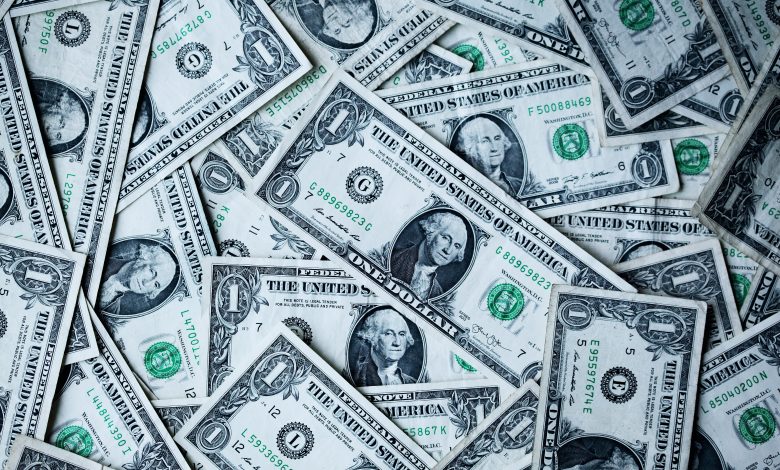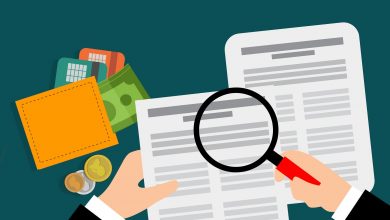How to Begin Banking

Adulthood comes with all sorts of wonders and new things to learn. From relationships to careers to mortgages and rent, there are all sorts of new stuff you need to wrap your head around. One of the most important examples of this is banking.
Banks are everywhere in life, unfortunately. Whether it’s buying a car, a house, borrowing for a holiday, or anything else, a bank is your go-to institution. It’s not just loans that banks offer, though, and it’s not just loan culture and terminology you need to learn. No, the world of banking is far more convoluted than that, but for those who know what they’re doing, it can be full of rewarding opportunities.
Different types of banking institutions, savings accounts, interest rates, lines of credit, and so on are all examples of the different variables that you’re going to encounter in your banking life. Then there are the actual processes, like applying for a loan or making a deposit or withdrawal. This guide is going to run you through some of the absolute basics of banking, from how to manage your account to the lingo and terminology you need to familiarize yourself with.
Why You Need a Bank Account
First and foremost, you’re going to need one to get a job. Most, if not all, full and part-time jobs put your earnings directly into your bank account, as opposed to cash in hand or through another financial platform. Admittedly, as time goes on, the number of alternatives being used by employers increases, but all the same, your wages going into a bank account is easily the most prevalent method used.
Then, there’s the obvious reason that it’s a good place to store your money. In this day and age, one of the last things you want to be doing is keeping all your money in cash. Not only does it leave you open to being robbed, but you can also easily lose that cash. Or perhaps you leave some of it at home and then don’t have enough to do what you need to do, whereas, with a bank account, you can get a debit card and have access to all your cash instantly.
Having a bank account also lets you take advantage of saving accounts. These are long term accounts that you hold your money in that yield interest over time. That’s all well and good, but the more savings you have stored up, the easier it is for you to get a loan, which is the last benefit to having a bank account that we’re going to discuss.
Regardless of how you feel about loans in general, you’re going to need to get one at some point. Whether to put yourself through college, to get a car, a house, or anything else, it’s just unavoidable for 99.9% percent of us. Society is just built that way, meaning that you’re going to need to open a bank account in order to apply for a loan from that specific bank.

Banking Lingo
With the why out of the way, let’s have a look at some of the common phrases and terminology you’re going to want to know. Chances are that you already know what a lot of these words mean, either from general knowledge or from encountering them in everyday life, but it can’t hurt to list them all the same.
Bank: Let’s start off simple; what exactly is a bank? A bank is an institution that accepts money from the general population and creates credit. Banks also offer loan and saving schemes and facilitate basic transactions like withdrawing or depositing money, either online or in a physical building.
Credit Union: A credit union is an alternative financial institution to the conventional bank. There are a few key differences, but the main one is that credit unions are not-for-profit, whereas banks are. Credit unions are managed by their members and allow users to borrow money from a shared pool at low-interest rates. They also offer many of the traditional services associated with banks.
FDIC: The federal deposit insurance corp is a government-run organization that insures the money deposited in a bank that operates under the organization.
APY: APY means annual percentage yield, which is how much interest you earn on your savings annually.
Interest: Interest is a percentage amount of a sum of money that is then added to it over time. It can work both ways, with you either earning interest on your savings or paying interest on a loan.
Beneficiary: Most banks or savings plans require you to have a beneficiary. A beneficiary is the next of kin or the person that inherits your savings if you happen to pass away.
Current Account: A current account is the most common form of bank account and usually the one people refer to when talking about bank accounts. It’s the type of account that your wages go into and the one that you use for day to day transactions. There are several types of current accounts, like student accounts and graduate accounts, but it’s all just variations on the basic current account foundations.
Compound Interest: There are generally two types of interest, normal and compound. Normal interest is just a percentage based on the original sum, whereas compound interest is a little more complicated. Essentially, compound interest is a percentage of a sum that renews annually. For example, say you have $1,000 dollars in a savings account at 10% percent compound interest. At the end of year one, you are going to have $1,100 dollars. For the next year, that 10% interest rate applies to the $1,100, not just the original $1,000. So it increases every time.
Overdraft: An overdraft is a limit amount of money you can spend with your bank account once there is no money of your own left. It typically comes with interest or a fee if you use it, although certain types of current accounts, like student accounts, may be interest or fee-free when it comes to overdrafts.
Credit: Credit is a word that you see popping up everywhere in the financial world, but for banking purposes, there are two definitions that you should be aware of. One is referred to as “having credit” and means that you have borrowed money from a lender. The second is to “be in credit,” which means you have above $0 dollars in your accounts.
Debit: Being “in debit” means that you owe out money, or you have gone into the minus numbers in your account.
Direct Debit: Setting up a direct debit is when you tell your bank to pay a company an amount of money on specific recurring days. If you’ve ever had a phone contract or paid for a Spotify premium, then you’ve used a direct debit. It’s worth pointing out that direct debits are controlled by the company being paid, meaning it is the entity that dictates how much you pay and at what intervals.
Standing Order: Standing orders are similar to direct debits, but there are a few differences. Primarily, the terms of a standing order are determined by the account holder, meaning it’s you that determines how much is being paid and at what point the money is moving. You can use standing orders to automatically transfer money from your current account to your savings account or to pay your rent. One important factor of standing orders is that the amount of money you specify is set in stone, so if you want to transfer different amounts at each payment interval, standing orders shouldn’t be your go-to.
Credit Score: Your credit score, or credit rating, may just be the most important three-digit number you’re ever going to encounter in your life. It is a number that is generated from your credit report and is used by lenders when determining how much to charge you for a loan or even whether to offer you a loan or not to begin with. To simplify, it is a quick way to understand how well you are able to pay back your financial responsibilities.
Co-Signer: A co-signer, or a guarantor, is a person who you can get to sign on for a loan with you. They essentially act as insurance for the bank, and in the event that you can’t make payments, are expected to make payments in your place.
Fixed vs. Variable Interest: There are two primary interest rate categories: fixed and variable. Fixed interest rate stays the same for the entire duration of the agreement, meaning the percentage amount doesn’t move. Variable is the opposite. It is an interest percentage that adjusts over time in accordance with external indexes like the RPI.
RPI: RPI stands for retail price index and is an index used to measure inflation. It is a complicated algorithm that tracks the rate of inflation based on commonly purchased goods and is not something you need to know too much about.
AER/Gross Rate: AER, or gross rate, is the rate of interest on a savings account. It stands for annual equivalent rate. It is the rate of interest that would be paid annually on the account and a quick way to compare multiple saving accounts with one another.
APR: APR means annual percentage rate. It is the total percentage amount that you are going to be charged on a loan, including interest and any additional fees.
ATM: An automated teller machine, ATMs act as literal automated tellers, giving you an interface to access basic functions of your bank account from one of the various units dotted everywhere around the country. You mainly use them for withdrawals, but you can also request advice slips and bank statements from them, and depending on the model, you may be able to deposit through them.
Bank Teller: A bank teller, or bank clerk, is the employee that works the main desk in your local branch. They are the person that you’re going to be dealing with when you go in to make a face to face transaction or arrangement, as opposed to using an ATM or other technological option.
Debit Card: A vdebit card is similar to a credit card, except it only allows you to spend what you have, plus your overdraft. It is a card that gives you access to the funds in your bank account and can be used to pay for transactions online, in stores, and to access your account via an ATM.
Credit Card: A credit card is similar to a debit card, except you’re purchasing on credit and not directly from your bank account. It means you have more leeway to what you can buy and when you buy it, but it can land you in a hot mess of debt if you’re not careful.
Bank Statement: This is a record of all the transactions taken by your bank account over a series of time, usually one month. You can request one from your bank online, through an ATM, or through your local branch, and it contains information on every single process that your account has gone through in that time.
PIN: Your PIN is your personal identification number and is typically a three, four, or six-digit number designated by yourself that allows you to access your account. It acts as your security code and should be kept confidential above all else.
CVV: Your CVV stands for your card verification value. It is a three or four digit security code found either on the front or the back of debit and credit cards. You need your CVV to make online purchases, as well as to buy things over the phone or to set up direct debits.
Common Banking Services

Deposits
Making deposits is one of the two primary functions of your bank account, yet is a service it’s unlikely you’re going to use personally often. However, deposits don’t just refer to when you put money into your account; it refers to money going into the account regardless of the source, including things like your wages.
There are a few ways to make a deposit. Firstly, if you have cash that you want to deposit into your account, you’re going to need to physically go to your local branch. Once you’re there, you have to fill out a deposit slip and bring it to a teller (one of the employees at the desk). You need basic information like your account number and how much you’re depositing, but if you’re unsure of any of the information, you can ask any of the bank tellers, who should be happy to help you.
You can also make a deposit by transferring money into your account via an online banking portal or mobile app. This process varies from institution to institution but is usually a straightforward process that is spelled out for you. Again, if you’re unsure, feel free to talk to employees at your local branch for advice.
It’s worth pointing out that, on occasion, you may be able to deposit funds through an ATM as well, but not every ATM unit is fitted with that feature.
Withdrawals
Withdrawals are the exact opposite of deposits, meaning it’s when money comes out of the account. Now, banks want to make it as easy as possible for you to spend your money, so you have a few more options here than you do for deposits.
For example, you could head into your local branch to withdraw some money or order it online or over the phone and collect it. This is usually required for larger amounts, typically around $5,000 dollars.
Alternatively, you could use one of the countless ATMs dotted around the place to withdraw your money. You can find them anywhere, from supermarkets to gas stations to random street corners. There is a withdrawal limit with them, though, so don’t go using them if you’re looking to take out a big chunky lump sum of cash.
You can also use your debit card instead of cash if you don’t like the idea of carrying money on you. Using these cards lets you pay for things in shops and online without carrying bills around and is a safer and more convenient alternative to paper money. Nowadays, you can even hook up your card to your phone and use your phone to pay for transactions instead.
Then there’s the like of direct debits and standing orders, which are also payments set up that take money out of your account, as well as bank transfers.
Loans
One of the biggest selling points of a bank is the range of loans you gain access to once you join. Loans are based on your credit, both your score and the history of savings you have with the bank.
You can get a loan for quite literally anything you want, from six-digit mortgages to small personal loans to upgrade your computer to student loans to put you through college.
These days, most banks allow you to apply for loans online through a banking portal or over the phone; however, you can still go into the branch if you would prefer that face-to-face interaction.
Loans come with interest, which, if you’ve been paying attention, you should already know all about. This is a percentage of the money that you’re borrowing that must be paid back on top of the lump sum, so bear that in mind when you go to get a loan and never borrow what you can’t afford to return.
Financial Advice
Every single banking institution under the sun is home to some of the greatest financial and economic minds in the world. From your average teller all the way up to the CEO, money is their business, and they know what they’re doing with it.
This comes with the added bonus that banks often have financial advisors employed that you can speak to when you need advice regarding your money, whether that be saving, getting out of debt, or general queries.
Most of the time, a branch’s financial advisor would work on an appointment basis, so ask in the bank, or ring ahead of time about arranging a meeting.

Entering the World of Banking
That’s all of the foundations covered. Of course, banking is a multilayered discipline, and it goes so much more in-depth than what we’ve covered here, but for absolute newbies to the banking world, this should serve as a good place to start.
Banks get a bad rep, and to be fair, a lot of it is deserved, but the fact that it is essential to utilize them in day to day life remains. However, as time progresses and technology advances, technological and independent alternatives to conventional banks are cropping up more and more. So the competitiveness in the financial services world has never been higher, and when businesses compete, that’s good news for us consumers.
Regardless, you need to know the basic banking services and terminology; otherwise, you risk being left out in the open with any funds you’ve accumulated, with no way to store or use them, and the last thing you want is to live paycheck to paycheck simply because you don’t know how to manage your finances.



